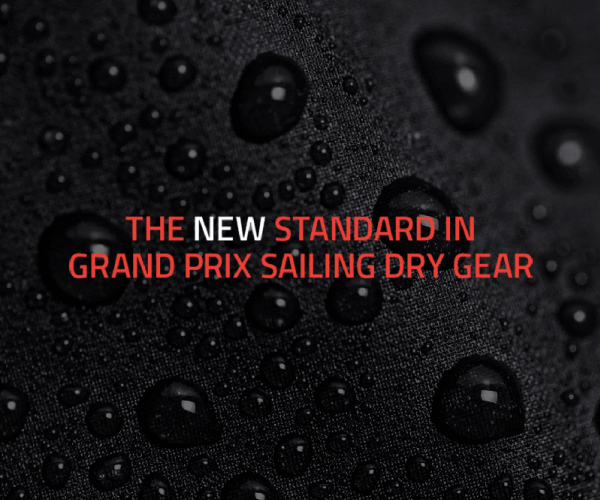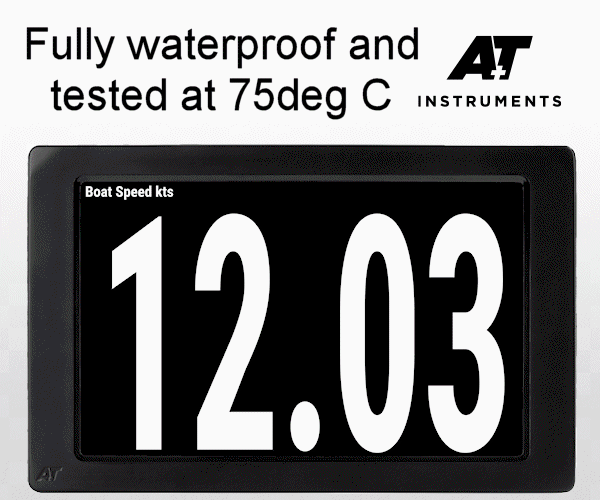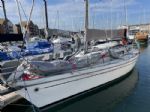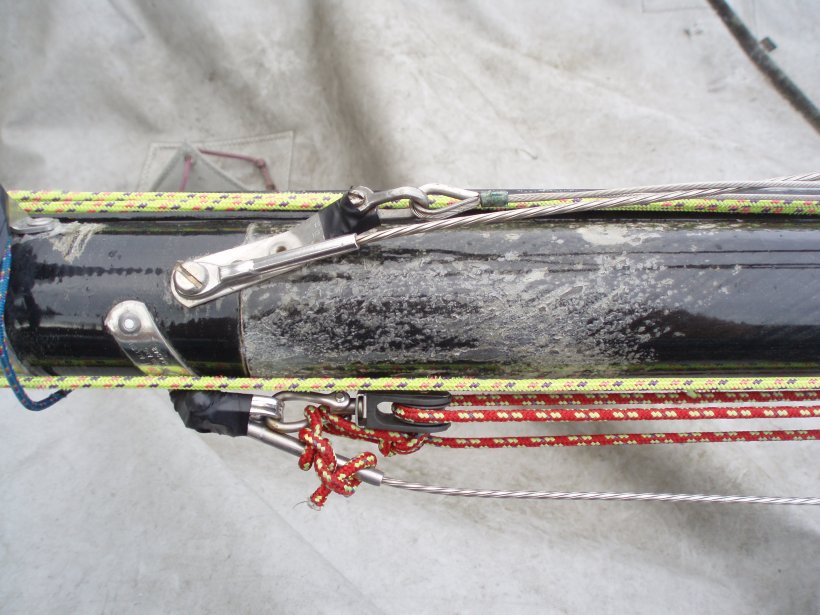












Boats for sale
| Laser 28 - Excellent example of this great design Hamble le rice |
 |
| Laser 140101 Tynemouth |
 |
| Rossiter Pintail Mortagne sur Gironde, near Bordeaux |
 |
List classes of boat for sale |
Nasty rash! |
Post Reply 
|
Page 12> |
| Author | ||
JimC 
Really should get out more 

Joined: 17 May 04 Location: United Kingdom Online Status: Offline Posts: 6662 |
 Post Options Post Options
 Quote Quote  Reply Reply
 Topic: Nasty rash! Topic: Nasty rash!Posted: 10 Apr 08 at 8:22am |
|
|
I reckon Paul's got it. Something going wrong with the replacement finish was in my mind too and I reckon he's right, especially as to finishing.
Setsail, your mast could last for years yet and if you want to sell the boat first you'll be stuffed. Even if it goes you'll be unable to sail for several weeks while another one comes. Some preventative maintenance would make a lot more sense. I'd probably dampen the fibres with epoxy resin then squash them all down with parcel tape and finally revarnish or paint the entire mast as Paul describes. |
||
 |
||
SetSail 
Posting king 

Joined: 06 Oct 06 Location: United Kingdom Online Status: Offline Posts: 100 |
 Post Options Post Options
 Quote Quote  Reply Reply
 Posted: 10 Apr 08 at 12:21am Posted: 10 Apr 08 at 12:21am |
|
|
off on a tangent slightly.....you should see my mast. the carbon has gone furry around the gooseneck and below. if im honest, the mast is a mess! original as well. came in not the best nick anyway, just waiting for it to give in!
despite this, its still going strong and has had some stiff breezes to deal with  |
||
|
RS821 - Now for sale, PM for details
|
||
 |
||
craiggo 
Really should get out more 

Joined: 01 Apr 04 Location: United Kingdom Online Status: Offline Posts: 1810 |
 Post Options Post Options
 Quote Quote  Reply Reply
 Posted: 09 Apr 08 at 6:13pm Posted: 09 Apr 08 at 6:13pm |
|
|
It looks like the badly effected areas are near joins in the spars, and areas with fittings. It looks like the area may not have been properly prepared last time is was re-laquered and subsequently moisture has got in at the joins and fittings. The moisture will run along the fibres and when it freezes will expand lifting the local lacquer off of the carbon. Once warmed the ice will melt and it will carry on running along the fibres. As Jim says the corrosion usually occurs on the metal fittings not on the carbon.
The fix is to scrape off the old stuff and re varnish with International two-pot varnish. When you scrape and sand the old stuff off take it down until all the current coating goes a milky white colour, clean it up with a bit of acetone and then apply your new coating. The trick is to get right into the corners of fitting as this is where the problem has arisen. Slapping an extra thick coat on in these areas may look good initially but wont help the underlying problem, so make sure you prepare it well. Paul |
||
 |
||
JimC 
Really should get out more 

Joined: 17 May 04 Location: United Kingdom Online Status: Offline Posts: 6662 |
 Post Options Post Options
 Quote Quote  Reply Reply
 Posted: 09 Apr 08 at 4:57pm Posted: 09 Apr 08 at 4:57pm |
|
|
I'd strip and revarnish. If the class rules are OK with it I'd paint the mast rather than varnish because I think its protects the spar better.
|
||
 |
||
Femto 
Groupie 
Joined: 11 Jun 05 Location: United Kingdom Online Status: Offline Posts: 47 |
 Post Options Post Options
 Quote Quote  Reply Reply
 Posted: 09 Apr 08 at 4:18pm Posted: 09 Apr 08 at 4:18pm |
|
|
Ok so whats the best fix here?
- Get it professionally stripped and re-riveted? - Strip the flakey areas and re-lacquer? - Don't look up!? (would an insurer consider this lack of maintainace if the mast were to break?) Thanks for the advice so far! |
||
|
RS600 717, RS400 870 Netley SC
Kerr 11.3 (Pier View YC) |
||
 |
||
JimC 
Really should get out more 

Joined: 17 May 04 Location: United Kingdom Online Status: Offline Posts: 6662 |
 Post Options Post Options
 Quote Quote  Reply Reply
 Posted: 09 Apr 08 at 3:02pm Posted: 09 Apr 08 at 3:02pm |
|
|
The trouble is that replacing rivets, even if done well, is best avoided too... rivets and carbon masts don't really mix very well, even though there's often no choice.
The real fix is to have no metal fittings in the mast at all, which is impractical, and even reducing the number gets seriously expensive. This is why you see flash bonded carbon spreader brackets and all the rest of it on the development boats which aren't built down to a price so much. |
||
 |
||
Femto 
Groupie 
Joined: 11 Jun 05 Location: United Kingdom Online Status: Offline Posts: 47 |
 Post Options Post Options
 Quote Quote  Reply Reply
 Posted: 09 Apr 08 at 1:47pm Posted: 09 Apr 08 at 1:47pm |
|
|
The boat is a fairly early one - 873, not sure if the mast is original,
it was refinished about a year ago by the previous owner.
Been sailing 600s for several years now, so have seen and heard all about the problems with metal sleaves in the angel masts. I'm just wondering if all the effort of stripping back and reapplying is wise without sorting the problem- Any ideas how much someone like Ashdown marine would charge to strip, re-rivet and re-finish the mast? |
||
|
RS600 717, RS400 870 Netley SC
Kerr 11.3 (Pier View YC) |
||
 |
||
JimC 
Really should get out more 

Joined: 17 May 04 Location: United Kingdom Online Status: Offline Posts: 6662 |
 Post Options Post Options
 Quote Quote  Reply Reply
 Posted: 09 Apr 08 at 1:30pm Posted: 09 Apr 08 at 1:30pm |
|
Tell that to owners of the early RS600 masts... Ye canna ignore the laws of physics Captain... In theory there should be anti galvanic zinc paste under the fittings, but presumably that doesn't last for ever - it can't do if its going to work. In practice it has been known for people to forget. Carbon should erode the metals though as I understand it. I have seen rivets with the ordinary steel pins left in. You can usually tell by rust stains. Good to push those through if there are any.
I'd probably use a mixture of sandpaper and a stanley knife blade held at 90 degrees to the surface as a scraper for the very loose stuff. If its not loose you don't really need to remove it.... To test reactions - apply a small amount of vanish/paint and leave for 48 hours... |
||
 |
||
alstorer 
Really should get out more 

Joined: 02 Aug 07 Location: Cambridge Online Status: Offline Posts: 2899 |
 Post Options Post Options
 Quote Quote  Reply Reply
 Posted: 09 Apr 08 at 1:30pm Posted: 09 Apr 08 at 1:30pm |
|
|
That's pretty ugly, how old is it? That last phto clearly shows the problem extending along the fibre twills, which could be a cause of concern.
|
||
 |
||
Femto 
Groupie 
Joined: 11 Jun 05 Location: United Kingdom Online Status: Offline Posts: 47 |
 Post Options Post Options
 Quote Quote  Reply Reply
 Posted: 09 Apr 08 at 1:13pm Posted: 09 Apr 08 at 1:13pm |
|
|
Another pic showing the hounds below if its any help.
I was also wondering about the galvinic effects of stainless bits into a carbon mast- as far as i know its a standard off the shelf RS800 mast so hoped such things would have been sorted at manufacture. The fibre layup below the lacquer looks fine and its had good ragging in 25knots recently so can't be that bad!! Anyone know the best way to strip the existing stuff off as i suspect sanding might be rather tiresome? Also any method to tell if it will react to two-pack over the top of any reminants? Cheers  |
||
|
RS600 717, RS400 870 Netley SC
Kerr 11.3 (Pier View YC) |
||
 |
||
Post Reply 
|
Page 12> |
| Forum Jump | Forum Permissions  You cannot post new topics in this forum You cannot reply to topics in this forum You cannot delete your posts in this forum You cannot edit your posts in this forum You cannot create polls in this forum You cannot vote in polls in this forum |
Bulletin Board Software by Web Wiz Forums® version 9.665y
Copyright ©2001-2010 Web Wiz
Change your personal settings, or read our privacy policy
Copyright ©2001-2010 Web Wiz
Change your personal settings, or read our privacy policy












 Printable Version
Printable Version Delicious
Delicious Digg
Digg Facebook
Facebook Furl
Furl Google
Google MySpace
MySpace Newsvine
Newsvine reddit
reddit StumbleUpon
StumbleUpon Twitter
Twitter Windows Live
Windows Live Yahoo Bookmarks
Yahoo Bookmarks Topic Options
Topic Options